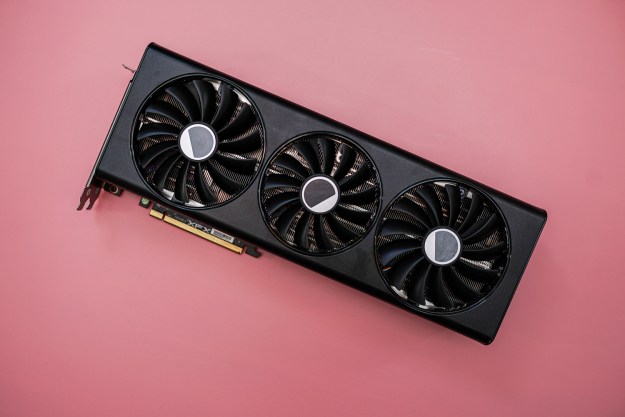“James-Bond-worthy construction and speed combined with exceptional value make LaCie’s Rikiki the killer portable hard drive to beat.”
- Incredibly small form factor
- Sleek and durable anodized black finish
- USB Speed Boost actually works
- Speedy 30 MB/s transfer rates
- Excellent value
- Sharp corners tear at pockets
- Short cord could be inconvenient

Introduction
If James Bond carried a portable hard drive, it would be LaCie’s Rikiki. Sure, his version would fire harpoons and self-destruct with the press of a button, but it would look – and function – a lot like this little wonder. The Rikiki, which means “tiny” in French, is among the smallest and subsequently most portable hard drives on the market and it doesn’t sacrifice speed or jack up the price to get there.
 Design
Design
Like LaCie’s similarly simple-but-refined Network Space 2, the Rikiki elevates “black box” to an art form. The chassis is just a rectangle extruded from aluminum and anodized black, but the sharp edges and brushed “grain” give it more character than anything you can mold out of plastic.
An inconspicuous LED indicator light and USB jack are the only mars on an otherwise smooth case, besides the subtle LaCie embossing on each plastic end cap.
At 4.3 inches long, 2.9 wide and half an inch thick, the Rikiki lives up to its name: It’s skinnier than Western Digital’s My Passport Elite, a full inch shorter than Iomega’s eGo, and beats Seagate’s Free Agent Go by the same measure. Unless you want to go solid state, you really can’t get much smaller.
Although the Rikiki would happily live in a pocket, the angular design does come back to bite it into this regard. The corners as this thing could double as weapons – perhaps another reason Bond would have the Rikiki. The prickly edges came precariously close to tearing our pockets when sliding in and out, and looked like they could easily chew through denim with enough wear over time. Save this one for the backpack.
Accessories
LaCie includes just one accessory with the Rikiki: an appropriately short five-inch USB-to-mini-USB cable. A longer cable might prevent a bit of stooping in the long haul, but for portability, which is clearly the focus here, the stubby little one can’t be beat.
Testing and Performance
Plugging in LaCie’s Rikiki for the first time prompts you format it, allowing you to choose which operating system (or systems) to use it with via a simple formatting wizard. A couple seconds later, you’re ready to roll.

LaCie also includes a tool called USB Speed Boost, which to our surprise, actually makes good on its promise of better transfer speeds. After a five-second install, you’ll need to plug the drive in again, and it’s good to go. Our write and read speeds jumped to 34.69 MB/s and 31.6 MB/s, respectively. That’s nowhere near the 33 percent gains LaCie advertises – more like an optimistic 14 percent – but we’re pleased to see any improvement from software alone. Unfortunately, it does leave a rather annoying icon in the task manager as clutter.
Value
At $140 for the 640GB version, the Rikiki offers storage at about 21 cents per GB. That’s cheaper than the 500GB Iomega eGo, 640GB My Passport Elite and 640GB FreeAgent Go, all three of which hit 25 cents per GB, despite their beefier dimensions.
Conclusion
Winning looks, speed and value make LaCie’s Rikiki the killer portable hard drive to beat. Although the corners can get a little bit stabby and the cord favors portability over convenience, both are small complaints for an otherwise stellar portable storage solution.
Highs:
- Incredibly small form factor
- Sleek and durable anodized black finish
- USB Speed Boost actually works
- Speedy 30 MB/s transfer rates
- Excellent value
Lows:
- Sharp corners tear at pockets
- Short cord could be inconvenient




